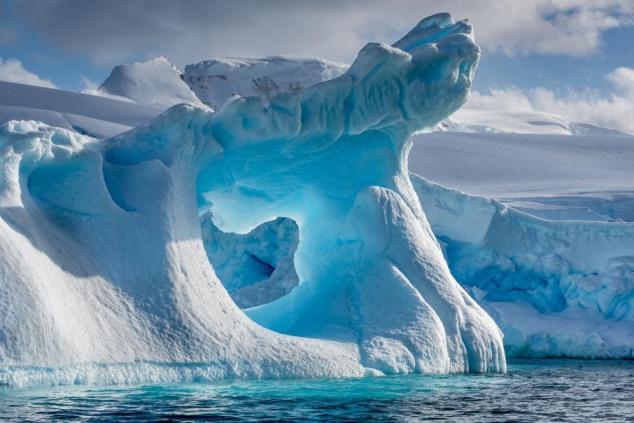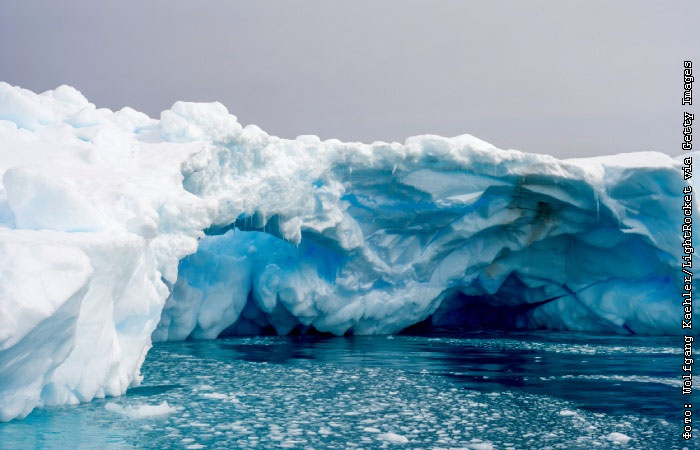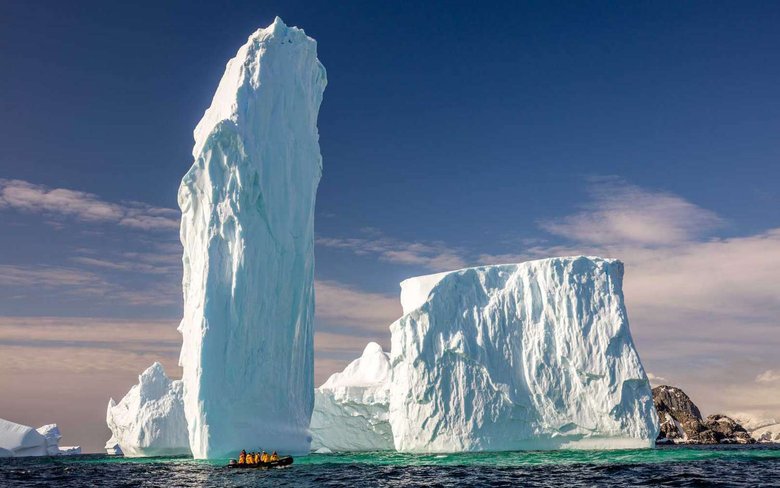Antarctica’s glaciers are melting at a catastrophic rate, but humanity still has time to prepare for rapidly rising sea levels. An international team of oceanologists has discovered that quite strong and warm currents move through large cracks in the bases of Antarctic sea glaciers, which accelerate the process of melting of these ice masses, preventing the continental glaciers of Antarctica from quickly “sliding” into the sea. The retreat of Antarctic glaciers due to rising summer temperatures has led to the melting of ancient mosses. Fossil mosses, buried under ice for several thousand years, became accessible to microorganisms and became a source of the greenhouse gas methane.
According to the researchers, seawater periodically cools and warms up and can circulate at the foot of the glaciers at high speed. Scientists have discovered that cracks in glaciers are one of the factors that trigger such a water cycle. The existence of this phenomenon is important to consider when preparing estimates of how sea levels will rise in the near future. The area of Antarctic glaciers has been rapidly shrinking in recent years as temperatures there have become 4–9°C higher than in previous centuries. Climatologists are particularly concerned about two large ice masses in Antarctica: the Thwaites and Pine Island glaciers.
As researchers recently discovered, their base is washed by streams of warm water, which has noticeably accelerated the melting in the last three decades. Processes of a similar nature are also occurring on the territory of the Ross Ice Shelf, the largest coastal ice mass in Antarctica, at the foot of which there are large crevasses. Their depth is several tens of meters and their width is about 10–30 m.
Researchers believe humanity has likely lost control over how the West Antarctic ice sheet will melt. If we wanted to preserve it in its original form, then we should have started fighting climate change not now, but many decades ago. However, awareness of this situation gives us several decades to prepare for rapid sea level rise in the future.

Six years ago, one of the last fragments of the Larsen Glacier collapsed off the coast of the Antarctic Peninsula, which gave birth to a giant iceberg the size of the Moscow region. Incidents like these are forcing scientists to discuss the prospect of an imminent and irreversible collapse of the entire West Antarctic ice sheet.
Scientists at the University of Leeds reported that 71 of the 162 ice shelves surrounding Antarctica shrank in volume over the 25 years from 1997 to 2021. If the ice shelves disappear or even shrink in size, it would have a major negative impact on Antarctica’s ice system and the global ocean circulation – the giant “conveyor belt” that moves nutrients, as well as heat and carbon, out of this sensitive polar ecosystem.
The water discharged into the ocean from ice shelves and glaciers is fresh water. Over the 25-year study period, the researchers estimate that 66.9 trillion metric tons of fresh water flowed into the Southern Ocean around Antarctica from ice shelves alone. In the Southern Ocean, dense, salty water sinks to the ocean floor as part of a global oceanic conveyor belt. This sinking of water acts as one of the engines that drives the ocean conveyor belt. Fresh water from Antarctica dilutes the salty ocean water, making it fresher and lighter, and this can weaken the ocean’s circulation system.

The study led to important conclusions – previously scientists tended to think of changes in ice shelves as cyclical processes of ice loss and accumulation. Instead, there is a steady decline in area due to melting and calving of icebergs. Many ice shelves have collapsed severely, with 48 losing more than 30% of their original mass in just 25 years. This is further evidence that Antarctica is changing due to a warming climate.
But that’s not all: the retreat of Antarctic glaciers due to rising summer temperatures leads to the release of methane from ancient mosses that have been under the ice for several thousand years. As TASS reports, this was stated in a message from the Krasnoyarsk Scientific Center of the Siberian Branch of the Russian Academy of Sciences. Fossil mosses, buried under ice for several thousand years, became accessible to microorganisms and became a source of the greenhouse gas methane.
According to researchers, polar ecosystems are sensitive to climate change, and when mosses thaw, they become accessible to microorganisms, which immediately begin to process them, releasing methane. Further melting of Antarctica’s ice will lead to an increased flow of methane into the atmosphere, scientists note.





